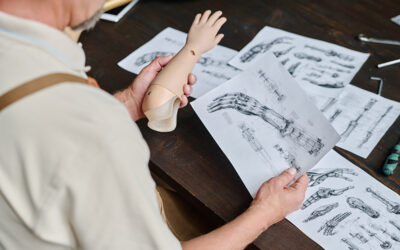Like all other practices, pediatric practices are also required to start using ICD-10 coding to bill their services from October 1, 2015. The new codes are much more helpful to track public health conditions, ensure improved data for epidemiological research, measure outcomes and care provided to the patients, make clinical decisions, identify fraud and abuse and design payment system/processing claims system. Pediatricians should learn the nuances of the new coding system and prepare for the transition as soon as possible. A research conducted by the University of Illinois in Chicago reveals that the ICD-10 transition could have a significant impact on pediatric practices’ bottom line.
In this study, the researchers identified 2708 ICD-9 diagnosis codes using a statewide data set from Illinois Medicaid specified for pediatricians and these codes were grouped into 5 categories ranging from identity (direct equivalence) to convoluted (complex mappings that make conversion difficult). The convoluted and high-cost diagnostic codes were analyzed for accuracy and grouped into “information loss,” “overlapping categories,” “inconsistent,” and “consistent.” After that, reimbursement by Medicaid was calculated for each category. The results identified 26 percent of pediatric diagnosis codes as convoluted, which represents 21% of Illinois Medicaid pediatric patient encounters and 16% of reimbursement. The diagnosis codes under information loss (3.6%), overlapping (3.2%), and inconsistent (1.2%) categories represent 8% of Medicaid pediatric reimbursement. This implies that pediatric practices could suffer from significant financial disruption and administrative errors during the transition.
A detailed consideration of ICD-10 coding for pediatric services will give you a clearer view of the transition challenges.
Increased Specificity
Many of the diagnosis codes pediatricians frequently use require much more specificity in the case of severity, laterality (left, right, bilateral) and other nature of the disorder when it comes to ICD-10 coding. Let’s take the example of Otitis Media, a very common ear infection in children caused by bacterial or viral infection. There is only one code for acute serous otitis media in ICD-9, which is:
- 381.01: Acute serous otitis media
At the same time, there are eight codes in ICD-10 for the same condition depending upon the laterality and severity.
- H65.00: Acute serous otitis media, unspecified ear
- H65.01: Acute serous otitis media, right ear
- H65.02: Acute serous otitis media, left ear
- H65.03: Acute serous otitis media, bilateral
- H65.04: Acute serous otitis media, recurrent, right ear
- H65.05: Acute serous otitis media, recurrent, left ear
- H65.06: Acute serous otitis media, recurrent, bilateral
- H65.07: Acute serous otitis media, recurrent, unspecified ear
Complexity of Codes
In certain cases, you may have to choose more than one or two codes for accurate ICD-10 coding. You have to consider several things to select the most specific codes. Let’s take the case of injuries. ICD-9 uses separate ‘E codes’ to specify external causes of injury while ICD-10 incorporates these codes better and expands the sections for poisoning and toxins. So, if you are coding for injuries in the new coding system, you have to consider the following:
- Episode of care (for example, Initial, subsequent, sequelae)
- Most specific injury site
- Etiology or how the injury was sustained (for example, sports, motor vehicle crash, pedestrian, slip and fall, environmental exposure etc.)
- Place of occurrence (for example, school, work and more)
Initial encounters may also have to be considered, where appropriate.
- Intent (for example, unintentional or accidental, self-harm)
- Status (for example, civilian, military)
A sample for this type of coding is as follows. The condition is a right knee strain injury that occurred in a private day care center when a child fell down after colliding with another child while running. The ICD-10 codes used will be:
Injury
- S86.811A: Strain of other muscle(s) and tendon(s) at lower leg level, right leg, initial encounter
External cause
- W03.XXXA: Other fall on same level due to collision with another person, initial encounter
Place of occurrence
- Y92.210: Daycare center as the place of occurrence of the external cause
Activity
- Y93.02: Activity, running
Additional Documentation
Pediatricians should add more details to their clinical documents that represent very specific characteristics of the condition. For example, when documenting asthma, pediatricians must denote the type of asthma (mild intermittent, mild persistent, moderate persistent, severe persistent, or other) and whether the asthma is uncomplicated, with exacerbation, or with status asthmaticus. They should also specify the cause of the asthma (for example, exposure to environmental tobacco smoke, history of tobacco use, or occupational exposure to environmental tobacco smoke).
If pediatricians continue to document as they are doing now, the diagnoses may map to unspecified codes that are not payable.
Effective Solutions to Address the Challenges
- Training – Providing proper training to your staff members will give you more time to adjust to the new code set and help to mitigate any productivity losses. The training should be given in an incremental and staggered manner so that it does not affect daily responsibilities, especially in smaller practices.
- Documentation Improvement – Detailed documentation is essential for a smooth ICD-10 transition. Pediatricians must specifically document all the presenting symptoms or chronic and acute conditions in detail. They should understand the expanded code descriptors to ensure comprehensive documentation. Complete and detailed documentation will enable pediatricians to organize their observations and examination, justify their treatment plan, support diagnoses and track patients’ progress and outcomes. Such kind of documentation also helps to predict the severity of the illness, length of hospital stay, and risk of morbidity/mortality data.
- Code Mapping – Mapping your most commonly used ICD-9 codes to their ICD-10 equivalents will familiarize you with the new codes before the transition. The other benefits include understanding the structure of ICD-10 codes specific to your specialty, determining whether more specific documentation is required, improving the accuracy of billing pediatric services, guiding changes to documents and forms, and planning and customizing your staff training. The complexity of mapping may depend upon your unique practice and/or specialty.
If you find that the transition is costing you too much time and money, consider partnering with a professional billing and coding company. With trained, professional staff, the required knowhow, advanced billing software and the right infrastructure, they will take care of your ICD-10 transition while you focus on your core competencies.




